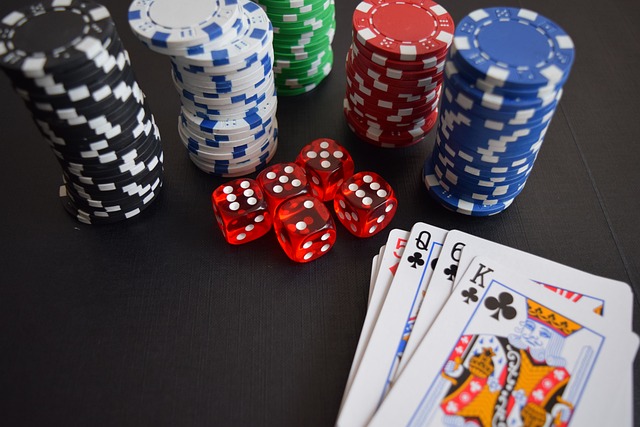Pre-flop play is the simplest and most important moment in any strategy. The preflop lays the foundation for each hand’s development on subsequent streets; mistakes made on the preflop sometimes cannot be corrected on the flop, turn or river.
So be careful and follow the table and advice in this chapter (see figure).
Fortunately, there are not too many combinations and variations in the preflop, so they can all be contained in a small and compact table. Print it out, study it and make sure you understand it fully. Then continue reading this chapter.
As you can see, we’re talking about a table for 9 people – standard in the PokerStars room we’ll be playing in. The first two positions after the blinds are called early position. From there, the smallest possible number of hands must be played.
The next two player positions are called middle positions. From these, a slightly wider range of starting hands can already be played.
The fifth position from the side lines is a position that can be considered as both a middle and a late position. In case you are in it, watch your opponents. If almost all or all of the players in front of you have folded, consider yourself in middle position, and if some players (at least 3) are involved, consider yourself in late position and act accordingly.
Then follow the two late positions – the most profitable positions in the game. Why? In this position, you are the last decision-maker at each stage. You will have much more information about your opponents than they have about you.
Sideways – the most disadvantageous positions in the game. If you are there, you are the first to make a decision in the pre-flop betting rounds. This means that you need to minimise the number of starting hands that are played when you are in a blind position.
It’s a known truth: The higher the limit and the shorter the table, the more position matters. It is even more important than the starting hand. More on that later, at this limit, position is still not important enough to pay attention to and try to figure out “what’s so good about being in dealer position”?
Pre-flop play

Big Pairs. Pairs are the most profitable cards in the game. The highest of these, the so-called big pairs, are aces, kings and queens. Your aim and objective before the flop with these cards is the same: to put as much money in the pot as possible, so you must bet or raise if someone has already bet before you.
The standard raise in a cachet is calculated as “3 BB + 1 BB for each player who has entered the game before you but has not raised”. However, nobody counts cents in these limits, so feel free to experiment and bet 20, 40, 80 cents, depending on what your opponents are doing. If you see your opponents responding to bigger bets (4-6 BB or even bigger), bet more. Are they raising your bet? Bet all in, there’s nothing to be shy about – your cards are favourites.
Middle pairs: Jacks and tens. These pairs are quite strong, but the more players see the flop, the lower the value of these cards. At low levels, a lot of players want to see the flop (standard mistake!), so these cards should be played less aggressively. We also match a bet from early and middle position if someone has already raised once, we drop the cards if the raise is repeated. You can try to raise from late position if no one has done so yet. Remember the 10% rule!
The 10% rule: pocket pairs (except top pairs) should only be played if the bet you pay to see the flop is less than 10% of your stack (or your opponent’s stack if he has less money in play). If there are two players on the flop with us, you can pay 15% of the stack; if three, 20% of the stack.
Small Pairs: the main objective of playing them is to catch a set. A set is a hand in which two pocket cards of the same value are dealt to the table by a third card of the same value. A set is a strong hand that brings the most money in these limits. Thus, if you are holding a small pair, you should match the bet in the preflop, trying to see the flop as cheaply as possible, without forgetting the 10% rule.
High cards: AK, AQ (see table for full list). If these cards are also in the suit, they are worth raising from any position. If they are in different suits, then only the late position should be raised. The size of the bet depends on the position: for example, if you are the dealer, you can see how many players have indicated the strength of their hand by raising or calling. If there have been no such “bids”, raise as much as possible to reduce the number of players who see the flop. Big cards are not recommended for a large number of opponents and are most profitable when two players see the flop. As for the big cards in the suit, they have good prospects for a straight or a flop, so a bet from any position will not be a mistake. However, in this case you should not bet too much – 4BB (8 cents) should be enough to firstly reduce the number of potential opponents, and secondly to make players with weaker cards pay with your stronger cards, i.e. to make your opponent make a mistake.
Medium suited cards, suited ties and suited aces: these hands are often called speculative or marginal hands, because without flop support their value is conditional. Most flops don’t work for these cards, but one in six or seven times we will have an opportunity to make a strong hand – a straight, a flop, or both at the same time. The idea of playing these cards is to play from late position, and with many players. These cards are not very strong for one-on-one play, but they have good potential when played against multiple people. A full list of cards can be found in the table below.
Truth: To make a profit in poker, you have to learn to drop all the other cards – ATo, J7s, etc. – without mercy. You have to drop all of them, no exceptions. Even if it’s very boring.
